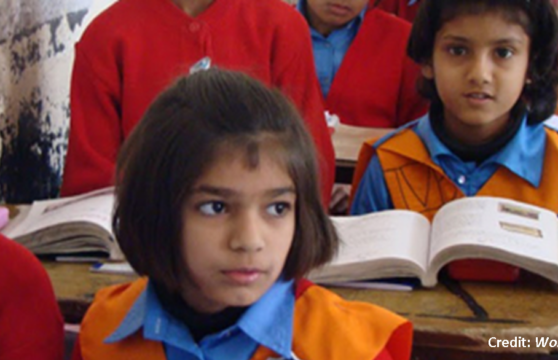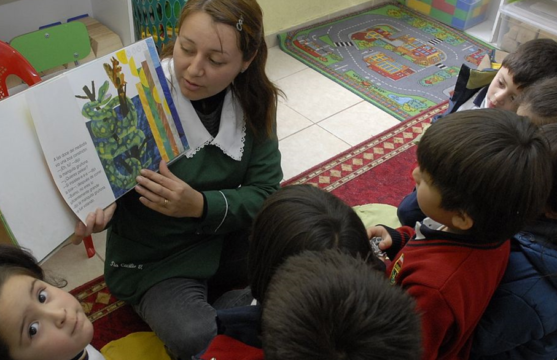
Private Schooling for the Public Good
Article argues that private sector options in the education sector have been underutilized in Latin America and the Caribbean.
Delivered to Congress on September 7th, the US Government Strategy on Basic Education is a five-year guiding document to orient and coordinate the work of ten government departments and agencies. The Strategy represents a significant achievement—the first time that there has been an integrated, government-level plan for improving basic education around the world—as a result of the 2017 Reinforcing Education Accountability in Development (READ) Act. The document sets forth a series of principles and objectives to guide the work of USAID, Department of State, Department of the Treasury, Department of Labor, Department of Education, Department of Agriculture, Department of Defense, Millennium Challenge Corporation (MCC), National Security Advisor and Peace Corps in their education efforts around the globe.
The Strategy does not differentiate any of its goals or objectives by geographic region, but there is much in the document that will be important for USG efforts to improve educational outcomes and capacity in Latin America and the Caribbean (LAC). The Strategy’s two principal objectives, “improve learning outcomes; and expand access to quality basic education for all, particularly marginalized and vulnerable populations,” are undoubtedly applicable throughout LAC. Although the region has seen a significant expansion in education coverage over the past two decades, regional and international assessments have clearly shown that, despite spending more time in the classroom, student learning levels have not increased proportionally. Students from marginalized and vulnerable backgrounds are especially at risk of leaving school early, receiving low-quality education and missing out on the benefits of early childhood programs. Making progress towards both these objectives would mean significant improvements to current education outcomes in LAC.
In addition to being generally “on the right track” towards addressing LAC’s greatest educational challenges at a regional level, a further achievement of the Strategy is its attempt to align the efforts of different USG agencies and departments in each country. Although many different departments and agencies work on education programs in LAC—for some as a primary focus and others as a supplemental benefit—until now, there has been no single, unifying document to bring together these diverse efforts in pursuit of a set of shared objectives. This is of course a major bureaucratic accomplishment from the perspective of the US government and the effort required to build consensus across many agencies, departments and programs. In the context of Latin America and the Caribbean, the Strategy’s common vision and goals are particularly significant, since almost three-quarters of the nineteen countries that receive USG support for education do so from two or more agencies. For example, in Honduras, the Department of Labor, Department of State, MCC and USAID all run education programs. In Ecuador, the Department of Labor, Department of State and Peace Corps have education initiatives. And so on. Country-level coordination, managed by a yet-to-be-established Agency Advisory Group, will be essential for effectively sharing information and identifying potential opportunities for collaboration and co-investing.
As the Dialogue’s 2018 paper on The Future of Education in Latin America and the Caribbean detailed, the US is hardly alone in working to improve education outcomes in the region. In addition to the countries themselves, other bilateral and multilateral institutions also play an important role in the education sector in these countries and often contribute funding at much higher levels than US agencies and departments. The Strategy recognizes that multilateral development banks, in particular, often have “the convening power needed to bring together bilateral, other multilateral, private sector and civil society actors in-country to advance development objectives.” In developing more detailed, country-level policies to address education challenges, the USG should consider strategically what specific areas of the education sector each multilateral is focused on to avoid duplicating efforts. The new Strategy should make this easier, however, since it is the Department of the Treasury that leads engagement with the development banks, but it is USAID whose work is most likely to potentially overlap with the banks’. By prioritizing inter-agency communication and information sharing, the Strategy should assist the Treasury Department and USAID, as well as the other USG departments and agencies, in more effectively leveraging US resources and identifying areas where multilateral agencies are not devoting adequate resources.
Inter-agency coordination and resource leveraging are likely to become even more important in coming years if current funding trends, and political rhetoric, continue. USAID spending on education in LAC has declined in recent years, from $86.28 million in 2012 to $64.33 million in 2017. If the USG is to use its education investments in the region as a tool for strengthening bilateral and regional relations—in addition to improving education outcomes for students—focused, coordinated efforts across agencies and departments will be necessary to maximize returns against decreased funding.
Of course, as with any large-scale strategy document that attempts to bring cohesion and order to an extensive bureaucracy, the devil will undoubtedly be in the details. There are many specifics yet to be defined, and it is the effectiveness of these policies and their implementation that will play a determining role in the ultimate effectiveness of the Strategy. Key questions that remain include:
At the global level, the Senior Coordinator for International Basic Education Assistance at USAID has been charged with leading inter-agency efforts, and therefore determining the answers to many of these questions. At the regional level, a similar management structure could be adopted to orient policy. Especially in the case of Latin America, regional thinking may be crucial to producing innovative, dynamic responses to multi-faceted challenges.
There is no doubt that the USG Strategy on International Basic Education is a significant achievement with much potential. But it is also inherently a document that speaks in generalities, not specifics. The countries of Latin America and the Caribbean, although all confront challenges of learning quality, access and equity, face vastly different education landscapes. The work of the Peace Corps in Guyana will inevitably be different from programs that the Department of Labor funds in Argentina. Meanwhile, in Honduras, Guatemala and El Salvador, three or four USG agencies operate simultaneously, often to address very similar or interconnected challenges, and coordination and information sharing can be crucial to improving effectiveness. In order for the Strategy to truly be a guiding document, it must be implemented in a way that encompasses each of these diverse efforts.
The Future of Education in Latin America and the Caribbean
Article argues that private sector options in the education sector have been underutilized in Latin America and the Caribbean.
Why Pakistan represents “the biggest education reform challenge” and 12 lessons that are applicable to reform efforts around the globe.
An Interview with Manuel A. Alvarez Trongé and Alejandro J. Ganimian on the quality of education in Argentina.

